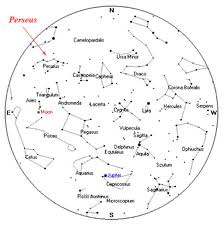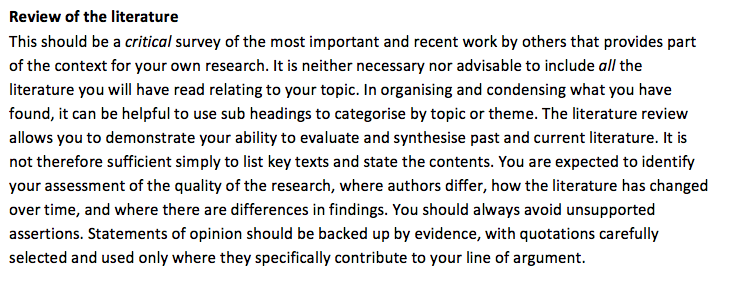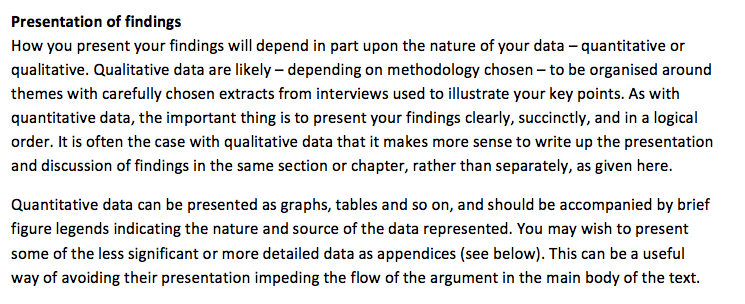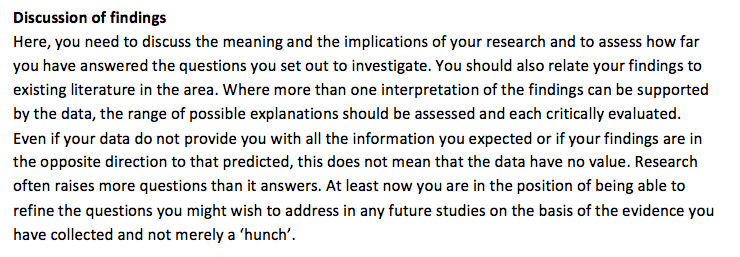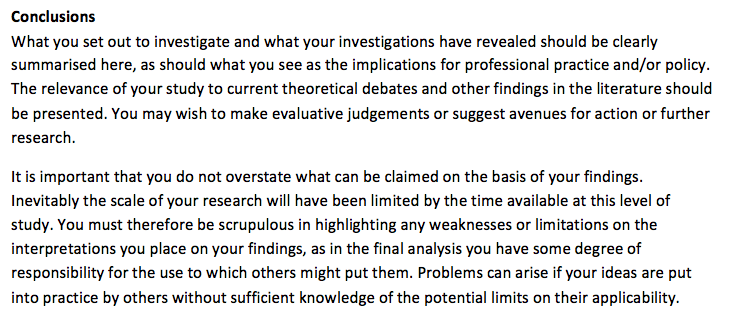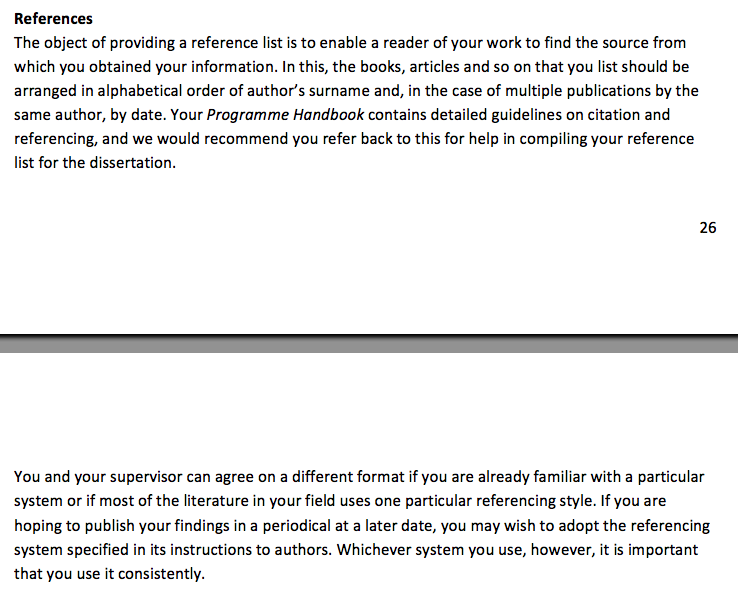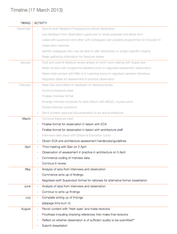|
Another quick thought over lunch and something which came to me during the previous post about potentially including images of EDC work within the lit review. I need to think about how I use image within the web essay so that it becomes an integral part of the representation of ideas, and not just to make the thing look nice (although that's helpful too). Here then is a very quick bit of brainstorming on how I might use images in the web essay (and not all of these are new ideas):
In what way have I attempted to use image in a way that goes beyond purely the aesthetic? How does it contribute towards the communication of meaning and the audience experience?
While I will almost certainly return to this, I think it has been a useful exercise in reminding me to stop and think 'Why am I doing this' and not to get immersed in the visual side of things beyond the potential value it might offer. I should probably do a similar exercise for audio.
0 Comments
Just noting this down over lunch as it has come to me. During our last meeting Sian suggested that within my Lit Review I need to discuss what multimodal artefacts can look like. She also suggested that I need to talk more specifically about my research questions, rather than distancing myself from the work. Sian suggested offering examples of Alisdair Gray's work, however I think I would like to offer something with a strong education/assessment focus. Taking on board all these points then, here's a question to put to Sian the next time I speak to her/email her:
Within my Literature Review, would it be appropriate to make direct reference to examples of multimodal assessment artefacts within the MSc in Digital Education? Or should this wait for the discussion of findings section? I actually think it would be really helpful to draw the reader's attention to specific examples at this stage - and of course I could use screenshots (perhaps edited). Within this section I offer a rationale for digital form I have taken for the dissemination of my dissertation. Introduction The dissertation guide for the MSc in Digital Education invites any student intending to present ideas in a 'non-conventional form' to submit a 2000-word rationale [finish sentence]. This provides a welcome and valuable opportunity to contextualise and justify the approach that I have taken in presenting my work, including:
Within my research proposal I committed to presenting my ideas in non-conventional form - my intention was always to explore the possibility of offering more than words on page or screen. As the dissertation exercise has progressed, my thoughts on how this would be realised - recorded within my dissertation blog - have developed, influenced by a range of factors including the insights offered by interview participants, my examination of literature attending to multimodality, the pressure of time and also an recognition of the limitations of my own technical proficiency and critical skills within different modes of representation. As such, what follows is a reflective piece that outlines my position, interweaved with extracts from my blog, data from interviews with course tutors, and reference to the literature. [Note: Consistent with the approach across my dissemination, although this rationale is dominated by text, where appropriate, this is juxtaposed with image (screen shots, photography, hand drawn sketches and notes) in order to convey meaning and aid the representation of ideas. I acknowledge that this might render this rationale inconsistent with the requirement (within the dissertation guide) for a 'conventional rationale', however as per my wider dissertation, such an approach would have jarred with the subject under discussion.] My enthusiasm to present a non-conventional dissemination has been accompanied by an anxiety that the completed artefact will be seen as failing to exploit the opportunity for innovation and creativity that digital multimodality offers. My approach however has been to consider how I might best share my knowledge and ideas to the reader, ahead of an exercise in demonstrating or testing my own creative or technological proficiency.
In electing to offer a multimodal artefact for assessment I have focused on the form that will best allow me to communicate ideas and knowledge. Considering the subject of my research, it is entirely appropriate that I should elect to present my dissertation in a digital multimodal format. Indeed, there is an argument that to do otherwise - to submit a conventional text-based essay - would have to be seen in itself as questioning the validity of the digital multimodal form in an academic setting. Here's an interesting idea. Maybe when I'm thinking about the structure of the website for dissemination, I could explore its shape using by laying out a constellation.
The constellation form would in turn then be used to influence the layout of artefacts on the image that will form the front cover. I've included this image as an example and reminder that a constellation doesn't need to be a single line: it can break off in different directions. So for instance if I want to have several sections devoted towards 'Data findings and discussion' within what might be half way point of the structure of the essay, this would be shown by lines breaking out from the the central line of the constellation. As per my previous post, I put the idea out there that I might want and need to have some form of (short) explanatory spiel to explain to the reader unfamiliar with my work of what it exactly is that I'm trying to do. Although necessarily short (but I include my 'rationale for alternative format as an appendice?') this could include the following:
Just a thought, but is there any merit in including each of these different points alongside or beneath or somehow connected to nice pithy quotes that offer a justification for each approach? It's unconventional, but then so is the rest of the format. Would this make it look like a mini version of the rationale? Something to think about.
This will be the cover page. It will be titled 'Map'. It will have the constellation map image. The dissertation title will be included as part of the map image. The full image should be visible on the map without the need for scrolling meaning that the image will be much wider than it is tall, which works fine with the idea of a map. Ideally there would be no other text on the page (other than that on the map, so as to maximise the impact of the map. Any surrounding text detracts from the image itself. Other text on the map itself would be my name, programme title and date, all made to look map like. The image itself will be interactive through the use of Thinglink. Perhaps the above four sections would all fit into some form of Introduction or Contents page. I'm not sure I'll need all of these headings, though. Abstract: yes. Acknowledgements: yes (although perhaps within Bibliography as part of a References and acknowledgements page?). List of tables/figures: hmm, not sure I'll use any, although maybe I have a line that states 'all design and photography by...'. Table of contents: not sure as surely this undermines the visual table of contents represented in the map. Perhaps on the front page I should also offer an explanation to say 'what this is' and 'why I chose to do it this digital way' (i.e. why it's multimodal). I might also need something to say 'how it works', including the use of sound. Yep, reckon this should go in. And this. It will be interesting to see how much can be taken from the research proposal. This will be the background to what I set out to do and how it transpired, including how it changed. Do I need to mention that I had thought about including a visual analysis but decided to drop it due to time constraints and because I wanted to make the most of the interviewees time and felt this would limit discussion? Also, should I be upfront and say that I misjudged the nature of crit assessment (being formally assessed) but managed to turn it round by going along to assessment meetings? I'm glad to read (in the Presentation of... section) that within qualitative data it often makes sense to write up the finding along with the discussion of findings. That seems to make more sense to me, interweaving the findings with reflections on the literature, including how it is consistent or different to what's in the literature, or where it offers different perspectives not covered in the literature. On a more practical level, I'll need to think about whether I break this section up into different sections/pages on the web essay, depending on the length. As per the literature review, I could be looking at more than 5000 words (I'm guessing, here) so it might be a bit hard work to read in one go, scrolling down the page. Maybe when I look through the data it will itself to a small number of key themes (perhaps based around the research questions). Yep, I should include one of these. Yes, need to have one of these. I could attempt to be imaginative in how I compile this, but perhaps as its important functional information I need to be conscious of usability and should be a little conservative. In fact, if the other sections are going to be largely dominated by text down the screen, so this should be. Maybe in the name of reducing the number of different sections (and the complexity of the map image) I should make this section a combined 'Acknowledgements and references' section, including words of thanks and perhaps technical information outlining how it was prepared? This could include the dissemination rationale - although maybe these feels a bit like hiding it away.
It's late in the day so, rather than attempting anything difficult, I'm simply going to jot down some ideas about sound fragments that could be included within the audio on my web essay.
OK, so in outer space nobody can hear you scream, nevertheless I quite like the idea of having some form of interstellar soundscape for some parts of the web essay. Or perhaps this is the approach I'd use across all pages? This could work in a number of ways. I could have a generic track that includes space like sound effects - perhaps electronic chatter being sent back from a satellite to earth - on some of the more functional, administrative pages. Alternatively (or as well, I could take a Brian Eno type approach, where the sounds are themselves intended to reflect what space would sound like (if it was packaged up for consumption in a CD). This could also include space like sound effects. It might be worth watching some Sci-fi films for inspiration - Moon, 2001, that could of thing where there are long periods without dialogue and the space has to instead be filled in with sound - actually, that's a nice comparison with the way that sound will work on my own essay. I could include the occasional bleeps that might be heard on board a space craft or perhaps the sound of a shooting star (whatever that sounds like). Or maybe the occasional sound of a space craft passing in the distance. In fact if I find any effects or periods of sound that I particularly like maybe I could capture them and use them almost as samples (whilst acknowledging their use, of course). Maybe I could do this in quite a knowing way, by selecting film soundclips that are in some way representative of what is in that section of the essay - whether sound effect or actual dialogue, although I'd have to take care not to overdo this or make it look too contrived or overly clever. Maybe it's actually more interesting to sample clips that suit the content without it being done in a really explicit way. I could have a lot of fun watching fi Over the weekend I spent a little bit of time developing the (draft) front cover for my web assignments. The fact that I can now include an interactive map as the front page means I need to rethink the previous structure whereby the contents page was to be called a 'map'.
I'll add to this page as other thoughts or ideas come to me.
At my last meeting with Sian I proposed that that I would create a different piece of music to represent and accompany different sections of my dissertation. Sian seemed enthusiastic about this idea and felt that I would be capable of this. I'm not so sure about the capable, but am keen to have a go nevertheless. I'm going to write some notes here then on how this could work.
I have to be realistic about what's achievable, both in terms of time and also my own ability. Perhaps that means that I shouldn't try to create an original track for every single part of the dissertation? Maybe I could create some form of ambient music to accompany the more functional parts of the dissertation, for instance the front cover, contents, appendix, bibliography. Taking this approach would free up more time to create music that is specifically representative of the different areas of discussion. I don't exactly know what this means or whether it would be feasible. For instance, what type of music could be seen as representative of a literature review? Or maybe I can channel the spirit of Brian Eno and think about composing Music for Methodology. I'm assuming here that music needs to go beyond simply being pleasant accompanying sound? Or is it justifiable to include an audio element solely on the basis that it is intended to create an aural space that the listener might find conducive to reading or interpreting the words on the screen? I expect that I will need to offer a more convincing rationale for the inclusion of sound in this way - and within that, how I decided that a particular sound would be conducive to reading? A way around this might be to use music that is itself the product of what is written in the text. Is there a way of feeding the text from a particular section into a piece of software that in turn will create music? I could always edit it afterwards without losing its original form. In fact, does each piece of music have to represent what's contained in the text of for that part of the dissertation? Could I instead just create a number of pieces that are representative of the wider dissertation, rather than specific sections? This would mean that I could focus on the general subject matter - books, screen, colour, visual image, film learning - rather than the content of particular sections. If I did take this approach, maybe I could instead use the artefacts objects as a way of creating sound? For instance, perhaps there's a way of using one of the Brian Eno apps to create shapes that are representative of objects (e.g. a book) that in turn create music. In this way, the visual representation of the book creates its own sound. If I create a particular sound for the different artefacts, these could then form the basis of different soundtracks. Taking the Brian Eno approach again, they would be used repeatedly in different sequences so that no two tracks were the same. To any of the tracks I could add additional layers of sound that are in some way representative of the subject, for instance it could be the sounds of someone flicking through a book, a film reel or effects that fit with the constellation metaphor. |
Categories
All
Archives
October 2013
TimelineOther stuff
|
